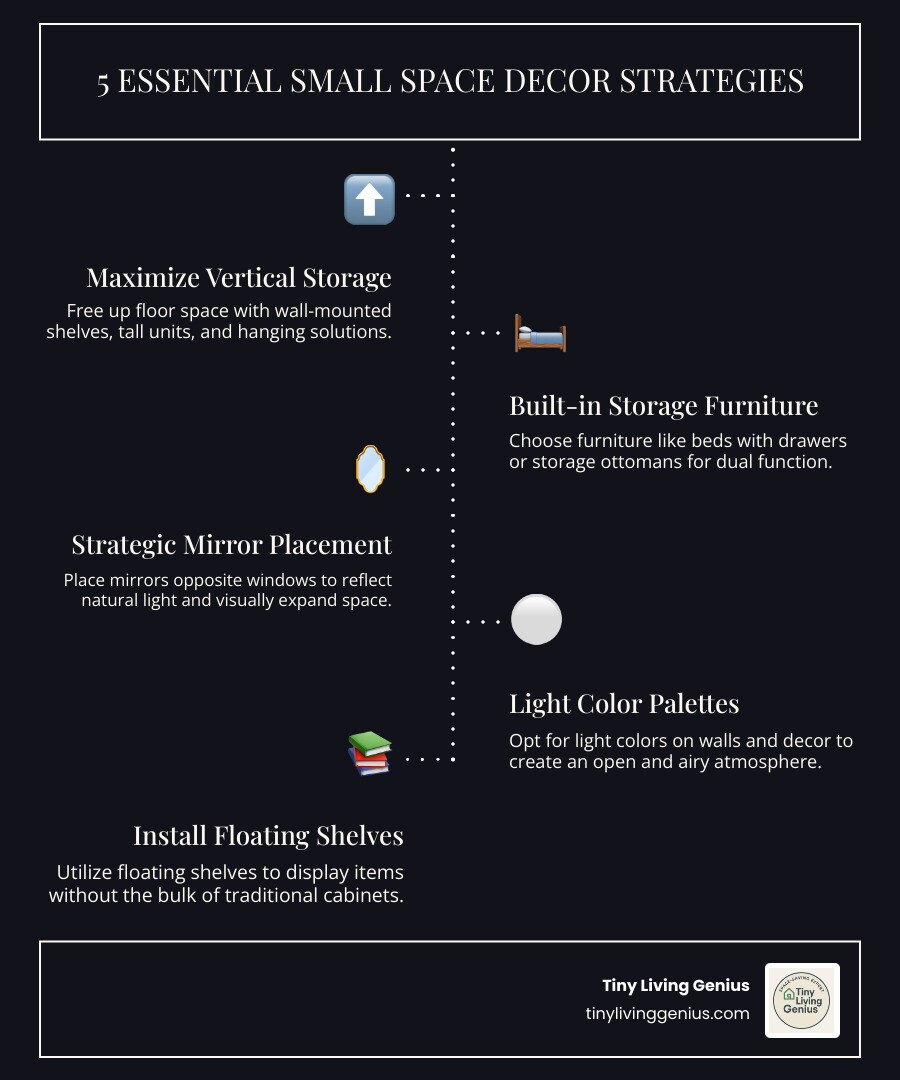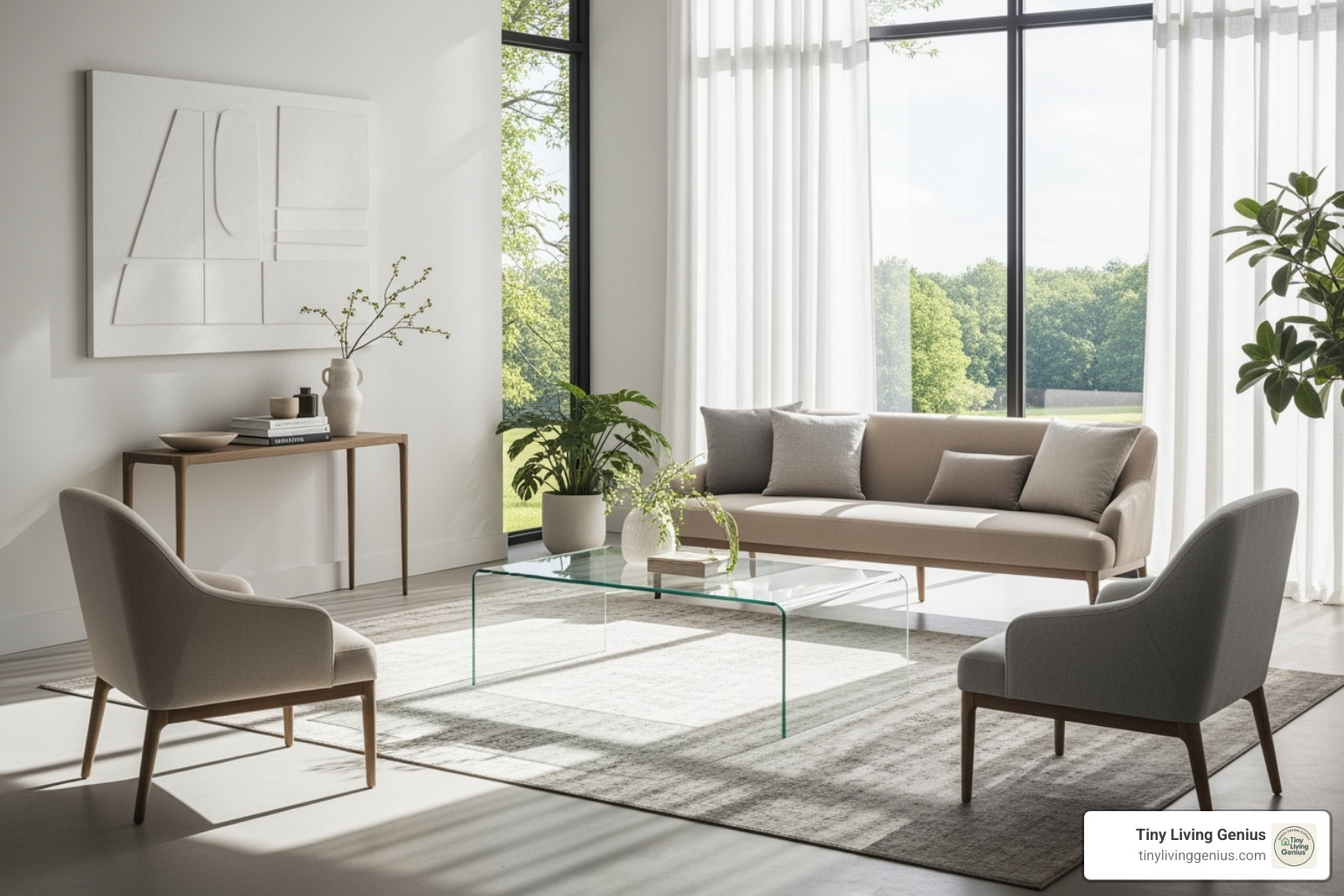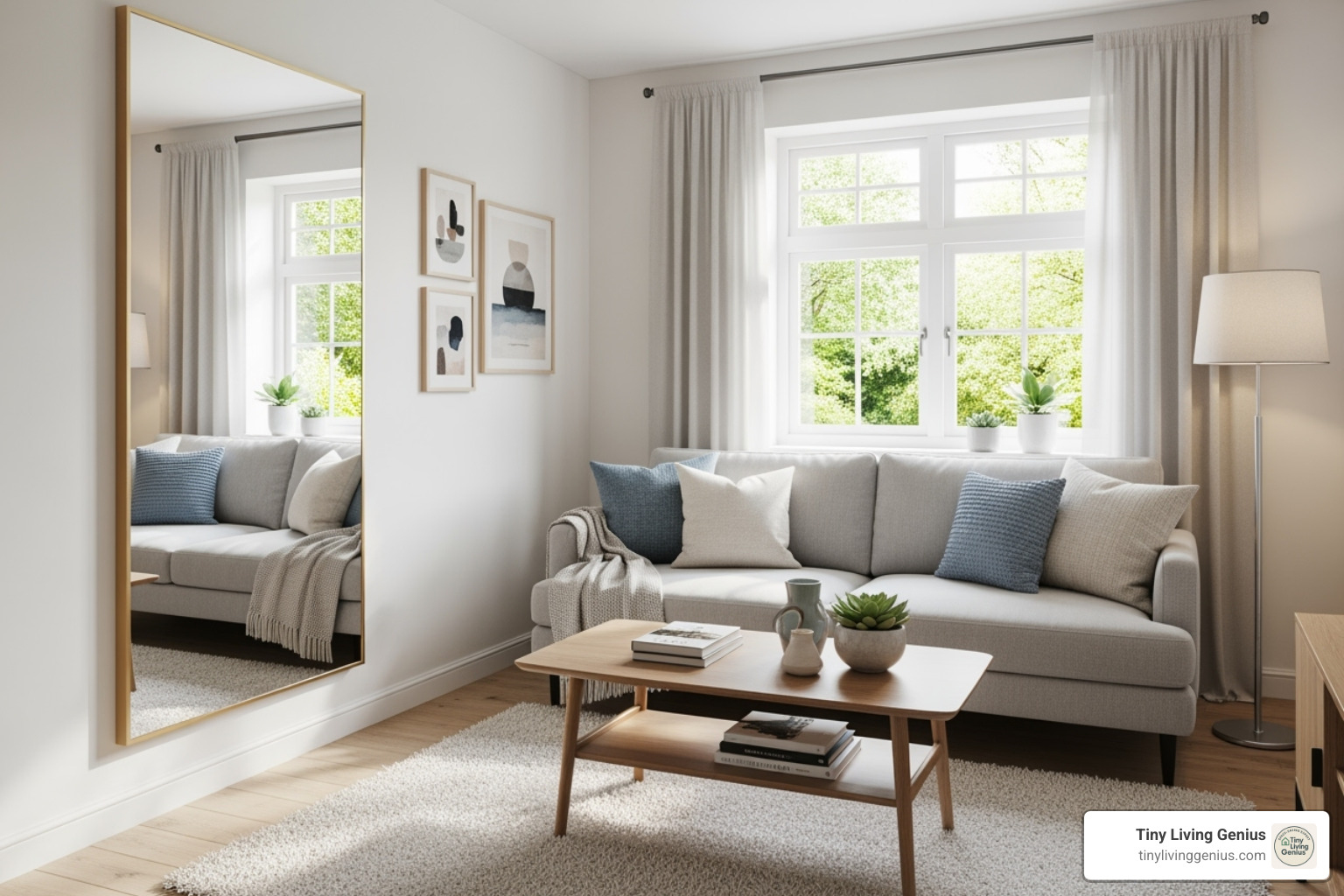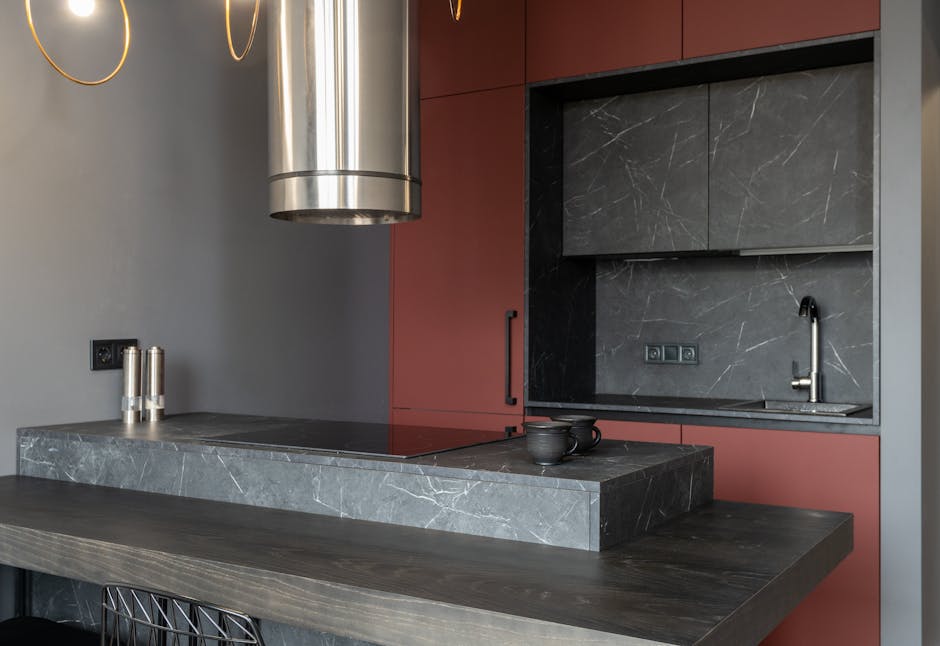Interior decoration for small house: 5 Grand Secrets
Why Interior Decoration for Small House Living Changes Everything
Interior decoration for small house living is about making smart choices, not compromises. If you’re looking to transform your compact space, here are some quick wins:
Quick Wins for Small Space Decoration:
- Paint walls white or light neutral to instantly create an airy feel
- Choose multi-functional furniture like Murphy beds, storage ottomans, and fold-up desks
- Use mirrors strategically to reflect light and visually double your space
- Go vertical with floor-to-ceiling shelving and wall-mounted storage
- Declutter ruthlessly and keep only what you truly need or love
Small spaces are cozy and cost-effective, but they can quickly feel cramped without the right approach. Research shows that clutter is the number one enemy of small space living.
The good news is that designers have proven that thoughtful furniture, clever storage, and visual tricks with color and light can make even the tiniest spaces feel open and stylish. The solutions, from Murphy beds to corner sinks, are both practical and beautiful.
I’m Ramy Saber, founder of Tiny Living Genius. With a background in Civil Engineering and project management, I’ve spent years researching smart solutions for interior decoration for small house projects. I’ve learned that every square inch matters when you’re working with limited space.

Maximize Every Inch: Genius Storage Solutions
In a small home, every inch counts. You can’t just toss things into random cabinets. The good news is your home has hidden storage potential you probably haven’t noticed yet.
At Tiny Living Genius, we’ve seen homes transform from cluttered to serene by rethinking storage. As one designer puts it, “Look at all the different surfaces in the room and think about using spaces that you don’t often notice.” This mindset is key for successful interior decoration for small house living.
The secret is creative storage, not cramming more stuff in. Moving clutter off the floor makes your home feel bigger and more breathable.
For a deeper dive into changing overlooked areas into functional storage zones, check out our comprehensive guide on Smart Storage Solutions for Small Spaces.
Go Vertical
Look up. Your walls are untapped storage goldmines waiting to be found. Thinking vertically frees up precious floor space and makes your rooms feel taller and more open.
Taking cabinets to the ceiling is a simple, effective change, especially in kitchens. It eliminates the dust-collecting gap above and adds significant storage for less-used items, making your kitchen feel more polished.
Hanging plants add life and color without using counter or floor space. They also draw the eye upward, making ceilings feel higher.
Wall-mounted organizers and floating shelves are your best friends. Use kitchen rails for utensils, shelves above doorframes, or a two-tiered mantel extension. These solutions keep everyday items within reach without eating up floor space. You can also stack books vertically in a corner to create makeshift shelving.
Want to master this approach? Our guide on how to Maximize Vertical Space in Small Spaces will show you exactly how to make the most of every wall.
Accept Hidden and Built-In Storage
The best storage is the kind you can’t see. When your furniture doubles as storage, your home feels calm, not chaotic.
Beds with drawers are a no-brainer for small bedrooms. The frame can include integrated drawers for linens or seasonal clothing, eliminating the need for a bulky dresser. We’ve got tons of stylish options in our guide on Bed Frames with Storage: Maximize Space Without Compromising Style.
Ottomans with storage are multitasking champions. They serve as seating, a footrest, or a coffee table while hiding blankets, games, or magazines.
Banquette seating with hidden compartments is a designer favorite. These built-in benches offer flexible seating and hidden storage underneath. For instance, one beautiful attic guest bedroom featured hidden storage behind a flush door—completely invisible.
Custom joinery maximizes every inch. As one expert explains, “Eliminate awkward gaps with purposeful joinery… think about using built-in furniture to fit everything in properly.” This works beautifully around windows or under stairs.
Changing awkward nooks into closets or workspaces is where creativity pays off. A recessed corner can become a home office. The space under the stairs can be converted into a powder room. Don’t let architectural quirks sit empty—they’re opportunities.
Furnish Smarter: The Impact of Furniture on Space
Here’s something I’ve learned after years of working with compact spaces: the furniture you choose can either make or break your small home. It’s not just about picking pieces that fit—it’s about selecting items that actively work to make your space feel larger, lighter, and more livable.
At Tiny Living Genius, we believe smart furniture choices are the foundation of successful interior decoration for small house living. Every piece needs to earn its place by contributing both functionality and visual breathing room.

The secret lies in choosing appropriately sized, multifunctional, and visually lightweight pieces. As one expert puts it perfectly: “When you have a small living room, don’t choose the oversized sectional that’ll engulf the room—shop for appropriately sized furniture that’ll help the room look less cluttered.”
This means saying goodbye to bulky pieces that block sightlines. Instead, think about furniture with slender legs that let light flow underneath, or clear acrylic and glass pieces that seem to disappear. These visually lightweight options create the illusion of more space.
Leggy furniture is one of my favorite tricks. When you can see the floor beneath a sofa or chair, the room instantly feels more spacious.
For a deeper dive into selecting the perfect pieces for your compact home, check out our comprehensive guide on How to Choose the Right Furniture for Your Small Space: A Comprehensive Guide.
Furniture Choices for Effective Interior Decoration for a Small House
The real magic happens when your furniture does more than one job. I like to think of these pieces as the superheroes of small space living—they’re dynamic and adaptable.
Multifunctional furniture is where form truly meets function. A sofa that converts into a bed means your living room can welcome overnight guests. A dining table that doubles as your workspace eliminates the need for a separate desk. An ottoman with hidden storage keeps blankets tucked away while providing extra seating or a footrest.
| Bed Type | Floor Space Saved | Cost | Versatility |
|---|---|---|---|
| Murphy Bed | High (folds into wall) | High (custom build) | Excellent (transforms room from bedroom to office/living) |
| Loft Bed | High (space below for desk/seating) | Medium | Good (creates distinct zones within one room) |
| Storage Bed | Medium (built-in drawers/storage) | Medium | Good (adds hidden storage without extra footprint) |
Murphy beds are perhaps the ultimate space-saving solution. They can completely transform a room’s purpose, allowing a guest room, for example, to function as two different spaces at once—a feat that would be impossible with traditional furniture.
Fold-up desks are another brilliant option. When you’re done working, they simply disappear against the wall, giving you back precious floor space. They’re perfect for creating a temporary workspace without committing an entire corner to a permanent desk setup.
Convertible sofas have come a long way. Modern designs offer adjustable configurations that let you create a chaise lounge, additional seating, or a comfortable daybed depending on your needs.
Nesting tables are the unsung heroes of flexible living. These clever sets tuck neatly into one another when not needed, then spread out to provide multiple surface areas when you’re entertaining. For even more clever ideas, explore our article on 10 Foldable Furniture Ideas for Small Apartments.
Define Zones with Furniture and Rugs
A challenge in small, open-plan homes is creating distinct areas without building walls. The good news? You can absolutely create these “rooms within a room” while maintaining an open, airy feel.
Bookshelves as room dividers are one of my favorite solutions. A tall, open-backed bookshelf can separate your sleeping area from your living space without blocking light. Plus, you get valuable storage in the process.
Area rugs are surprisingly powerful tools for defining spaces. They ground an area and create clear visual boundaries. As one designer notes, “Rugs help create zones and define each nook instead of giving the impression of one blurred, combined room.” A well-placed rug instantly signals that this is a distinct area with its own purpose.
Clustering furniture strategically is equally important. Instead of scattering pieces randomly, group them together to form intimate, functional zones. A sofa and two chairs arranged around a coffee table clearly define a conversation area. As one expert advises, “When small spaces require multiple functions like this dining and living room, cluster the furniture to create defined areas.”
In open-plan living situations, every arrangement choice matters. For example, using dining benches instead of chairs can help them blend more seamlessly into surroundings and take up less visual space. These thoughtful choices help your small space feel organized rather than chaotic.
For more inspiration on arranging your compact living area, visit our guide on Living Room Furniture: The Ultimate Guide to Transform Your Space.
Mastering the Art of Interior Decoration for Small House Layouts
Beyond smart furniture and clever storage, the real change happens when you learn to play with perception. Interior decoration for small house spaces is as much about what you see—or think you see—as what’s actually there.

We’re talking about visual tricks that make ceilings feel higher, rooms feel wider, and spaces feel flooded with light. As one designer puts it, “A small room does require more thought in the decoration than bigger rooms tend to.” That’s exactly what we’re here for.
The secret weapons? Mirrors, strategic lighting, and color palettes. When you master these elements, you’re not just decorating—you’re creating an experience that makes your small home feel exactly how you want it to feel.
Color and Light: The Foundation of Interior Decoration for a Small House
If I could give you only two tools to transform a small space, it would be color and light. They work together to either expand your space visually or create an intimate, cocooning atmosphere.
Let’s start with the classic move: white walls. White reflects light, making walls seem to recede and ceilings appear higher. Painting a dark fireplace white, for example, can instantly make a space feel bigger and brighter.
But white isn’t your only option. Light neutral tones—soft grays, warm beiges, pale blues—create that same airy feeling. A monochromatic color scheme, covering everything in variations of a single color, also prevents the eye from stopping and starting, creating a seamless flow.
While light colors expand, dark colors can actually work beautifully in small spaces by creating intimacy. Instead of fighting the small footprint, dark walls accept it, turning your compact room into a luxurious, cozy retreat. As one expert puts it, “Accept the coziness with dark hues.”
Natural light is pure gold in small spaces. Keep windows unobstructed with sheer curtains or Roman shades. A pro tip: hang your curtains as close to the ceiling as possible and extend the rod beyond the window frame. This draws the eye upward and outward, making both the window and the room appear larger. Our guide on Natural Light in Small Spaces explores this in more detail.
When the sun goes down, layered artificial lighting takes over. Forget a single overhead fixture, which creates harsh shadows. Instead, mix ambient, task, and accent lights. A floor lamp, a table lamp, and wall-mounted sconces create depth and eliminate space-shrinking shadows.
The Magic of Mirrors and Reflective Surfaces
If light colors are your foundation, mirrors are your secret weapon. They’re the closest thing we have to adding square footage without knocking down walls.
The most powerful placement? Mirrors opposite windows. This reflects both the view and the natural light, essentially doubling both.
Instead of scattering small mirrors, go for one large statement mirror. A single oversized mirror acts as a focal point while dramatically expanding the visual space. In one bathroom with a sloped ceiling, a custom-fitted panel of mirror-glass made the ceiling feel higher and the entire room significantly larger.
Mirrored furniture—like a mirrored dresser or coffee table—takes this concept further by reflecting the room around it, making the piece seem to disappear. In kitchens, mirrored backsplashes reflect light and add unexpected depth.
Don’t overlook the subtle magic of glossy finishes and shiny materials. High-gloss paint, polished tiles, or metallic accents all reflect light, brightening rooms and creating a more expansive feeling.
Decor That Doesn’t Clutter
Decorating a small space requires restraint, but that doesn’t mean boring. The key is to avoid visual chaos.
Start with this counterintuitive truth: one large piece of art often works better than a collection of small ones. A single painting or photograph creates a focal point and adds depth without making walls feel busy. It’s about impact, not quantity.
If you love collecting art, create a gallery wall that extends all the way to the ceiling. This draws the eye upward, making your walls appear taller. Just keep the frames cohesive to maintain visual calm.
The golden rule? Keep surfaces simple. Clutter is your enemy. Choose a few well-loved objects rather than covering every surface. A beautiful lamp or a meaningful photograph makes a statement without overwhelming the space.
Here’s a trick I love: use functional items as decoration. A stack of cookbooks, a vintage basket holding flowers, or beautiful dry goods in glass jars can be both practical and beautiful.
Even something as simple as stacking books vertically in a corner can create visual interest and impromptu storage. The key is being intentional. Every decorative element should either serve a function or bring you joy. This minimalist approach lets each piece shine. For more inspiration on making every piece count, explore our guide on Creative Ideas for Small Space Furniture: Maximizing Functionality in Small Space.
Room-by-Room: Creative Solutions for Tricky Spaces
Every small home has a tricky space—a tiny galley kitchen, a bathroom the size of a closet, or an awkward nook that collects dust.
But here’s what we’ve learned at Tiny Living Genius: these so-called “problem” spaces are actually opportunities in disguise. With creative thinking and smart interior decoration for small house strategies, you can transform these tricky spots into some of the most functional and charming areas of your home.

As one designer wisely puts it, “You have to solve the issue first and then apply your taste when you have the solution you need.” In other words, figure out what works, then make it beautiful.
Small Kitchen and Bathroom Hacks
Kitchens and bathrooms are usually the toughest nuts to crack in a small home. They need to work hard, but they also offer some of the most satisfying changes when you get them right.
Top 5 Small Kitchen & Bathroom Solutions:
-
Corner sinks: Especially brilliant in bathrooms, a corner sink frees up precious wall space and opens up the room. They can be both practical and stylish.
-
Floating vanities: When your bathroom vanity hovers off the floor, the room suddenly feels bigger. Plus, you can clean underneath it.
-
Covering appliances with cabinet panels: This tiny-kitchen trick makes a huge visual difference. Covering appliances with matching cabinet panels creates a seamless, built-in look that feels less cluttered.
-
Pull-out pantries and magnetic knife strips: These specialized storage solutions squeeze functionality into every available inch. Pull-out corner organizers and magnetic knife strips keep your counters clear.
-
Glass shower doors: Swap that opaque shower curtain for clear glass doors, and watch your bathroom visually expand. Light flows through the space, making even the tiniest bathroom feel more open.
For even more targeted solutions to maximize these challenging spaces, check out our guide on Small Kitchen and Bathroom Storage Ideas.
Changing Awkward Nooks and Corners
Those weird architectural quirks—the recessed wall spaces, the odd corners, the under-stair voids—don’t have to be wasted space. In fact, they can become some of your favorite spots.
Tucking a desk into a recessed nook is one of our favorite moves. That unused alcove is a perfect home office waiting to happen. Adding a desk under an archway can give it a coveted built-in look without the high cost.
Window seats with storage turn a deep windowsill into double-duty furniture. You get a cozy spot to read, plus hidden storage underneath for blankets or games. Pairing a window seat with low-profile bookshelves makes the whole space feel purposeful.
Corner shelving takes advantage of vertical space that often goes ignored. Whether you go with custom-built or freestanding shelves, corners are perfect for displaying decor or storing books.
And don’t underestimate the power of creating a reading nook in an otherwise forgotten corner. A comfortable armchair, a small lamp, and a few shelves can transform a neglected spot into your favorite retreat.
For more innovative ideas on turning awkward spaces into productive ones, explore our Top Compact Corner Desk Ideas for Small Rooms: Space-Saving, Stylish Solutions.
Frequently Asked Questions about Small House Decoration
Over the years, we’ve heard countless questions from readers who are eager to transform their compact homes. People want practical solutions that actually work in real life. Here are the questions that land in our inbox most often, with answers based on what works best for interior decoration for small house living.
How can I make my small house feel bigger?
This is the question we hear most, and the answer is creating the illusion of space through strategic design choices.
Start with light colors on your walls. White or soft neutrals reflect light and create an airy feeling. A fresh coat of white paint can transform a room overnight.
Mirrors are your secret weapon. Place a large mirror opposite a window, and you’ve visually doubled your space by reflecting light and the view.
When it comes to furniture, think multi-functional and leggy. A sofa bed serves double duty, while furniture with visible legs creates openness. Less furniture often means more breathing room.
Natural light changes everything. Keep windows clear with sheer curtains or Roman shades. Also, layer in good artificial lighting—dark corners make spaces feel cramped.
Finally, declutter like your sanity depends on it. Small homes feel suffocating when they’re stuffed with things. Regular purging is about maintaining the illusion of spaciousness.
Don’t forget to go vertical with your storage and decor. Floor-to-ceiling shelving draws the eye upward, making ceilings feel taller.
What kind of furniture is best for small spaces?
The furniture you choose can make or break a small space. We’ve seen tiny studios transformed by smart furniture selections.
Multi-functional pieces are non-negotiable. A Murphy bed turns a bedroom into an office. Storage ottomans hide blankets. Nesting tables appear only when you need them. These pieces earn their keep by doing double duty.
Scale matters more than you think. As one expert noted, don’t choose an oversized sectional that will engulf the room. Shop for appropriately sized furniture. Measure twice, buy once.
Visually lightweight furniture creates breathing room. Glass coffee tables, acrylic chairs, and furniture with slender legs are physically present but visually recessive—exactly what you want in a compact space.
Foldable and collapsible pieces offer flexibility. A fold-up desk disappears when you’re done working. This adaptability is gold when every square inch counts.
How can I use decor in a small space without it feeling cluttered?
Decorating a small space requires restraint, but here’s the truth: less is genuinely more in compact spaces.
One large piece of art beats a dozen small ones. A single impactful artwork creates a focal point and adds depth without making your walls look busy.
If you love collecting art, create a vertical gallery wall that stretches toward the ceiling. This draws the eye upward and makes the room feel taller.
Let functional items do double duty as decor. A beautiful stack of cookbooks or vintage baskets can be both useful and aesthetically pleasing.
Keep your surfaces clear. This is tough but crucial. Clutter is your enemy. Choose a few flat surfaces to keep completely clear—your eyes will thank you.
Choose meaningful, sculptural objects over generic knick-knacks. A few well-chosen pieces with interesting forms will bring more joy than a shelf full of things you bought on sale.
The key is being intentional. Every decorative item should either serve a purpose or bring you genuine joy. When you’re selective, each piece gets to shine.
Conclusion: Your Small Space is Full of Possibilities
Here’s the truth about small house living: it’s not about settling for less. It’s about finding more creativity and intention. Every strategy we’ve explored proves that interior decoration for small house living is about making choices that work smarter for you.
Think back to where we started. The real enemy of small spaces isn’t the square footage—it’s clutter. When you tackle that challenge with clever storage, choose furniture that adapts to your needs, and use light and color to expand what your eyes perceive, your compact home stops feeling like a compromise. It becomes a curated space that truly reflects who you are.
The beauty of small space design is that every decision matters. A Murphy bed that folds away, floor-to-ceiling shelves that draw the eye upward, or a large mirror that makes your living room feel spacious—these aren’t just design tricks. They’re thoughtful solutions that change how you experience your home every day.
At Tiny Living Genius, we’ve seen countless homeowners transform cramped quarters into stunning, functional spaces. We believe smart design transforms any space. Your small house is already full of possibilities, just waiting for you to open them up.
So start small if you need to. Paint those walls white. Add a mirror opposite your favorite window. Clear off that cluttered countertop. Each change builds on the last, and before you know it, you’ll feel that wonderful sense of calm that comes from a well-designed small space.
Your journey to a more functional, beautiful home starts now. We’re here to guide you every step of the way.




